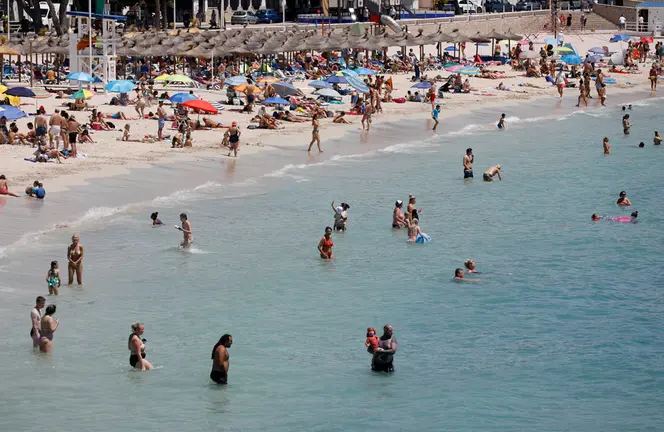The Spanish Traffic Authority (General Directorate of Traffic, DGT) has called on drivers to exercise extreme caution in the face of ice and snow, which are complicating driving on Spanish roads.
In Spain, rain and wind cause thousands of road accidents every year, but in winter snow and ice are also the cause of many accidents.
The arrival of a snowstorm this week to the Peninsula, coinciding with the December long weekend ('Puente de Diciembre') has made the DGT ask drivers to bring forward their return home, in anticipation of road cuts and other problems caused by snow, which may affect even highways.
The Spanish traffic authority has drawn up a guide to reduce the risk of accidents in the event of snow on the road.
In addition to the tips listed below for snow and ice conditions, experts also recommend driving on tracks made by other cars and in the highest gear possible so as not to lose grip, except when descending, which must be as low as possible to take advantage of engine braking.
It is also advisable to take some food, a blanket -it will be much appreciated in the event of being blocked- and a fully charged phone in the car.
Driving in the snow
Use of snow chains
The authorities recommend carrying snow chains or similar devices in the trunk of the car when there are warnings of possible snowfall. The Civil Guard (Traffic Police) also recommends learning how to install them before the need arises. Once the chains are installed in the vehicle, it is not possible to circulate at more than 30 kilometers per hour.
Fill up the gas tank
Traffic authorities also recommend, in case of snowfall, filling the gas tank before starting any trip. With this, more stability is achieved and the vehicle adheres better to the road. In addition, it is guaranteed to be able to keep the vehicle and its heating system on in the event of snow jams or prolonged stops due to slow traffic.
Drive with lights on
Like fog, snow also reduces visibility on the road. Traffic experts recommend that you always keep your low beams on even during the day. If visibility worsens, you can also use fog lights. It is advisable to clean the windshield and other windows of the car before starting the trip.
DRIVING ON ICE
Whether it is snowy or not, in winter it is possible to encounter ice sheets on the road in many areas of Spain, especially late at night and early in the morning. Be very careful with the whitish areas that can be seen on the road, especially on humid days and when passing through shady areas.
The worst thing about ice on the road is that many times drivers do not detect them until they are on them. For this reason, the traffic authorities advise to act in the following way if it is believed that there may be ice on the pavement.
Reduce speed
When a car is traveling on ice, the possibility of unwanted sliding is much higher than in any other case. That is why the authorities recommend reducing speed, using the brake gently so as not to block the wheels and avoiding sudden maneuvers such as overtaking.
When you notice that you are on a layer of ice, you should slowly release the accelerator and also turn the steering wheel slowly.
Safety distance
One of the biggest risks when there is ice on the asphalt is having a rear-end collision, that is, hitting the vehicle in front of us by slipping when braking.
That is why the authorities insist that a wider safety distance must be maintained with the preceding vehicle when driving on ice. Also, you have to use the brake gently.
Be careful with the road curves
The experts of the DGT also recommend avoiding approaching with the vehicle to the inner part of the road curves.
The reason is that this is the point of the road where there is usually a greater concentration of ice.











